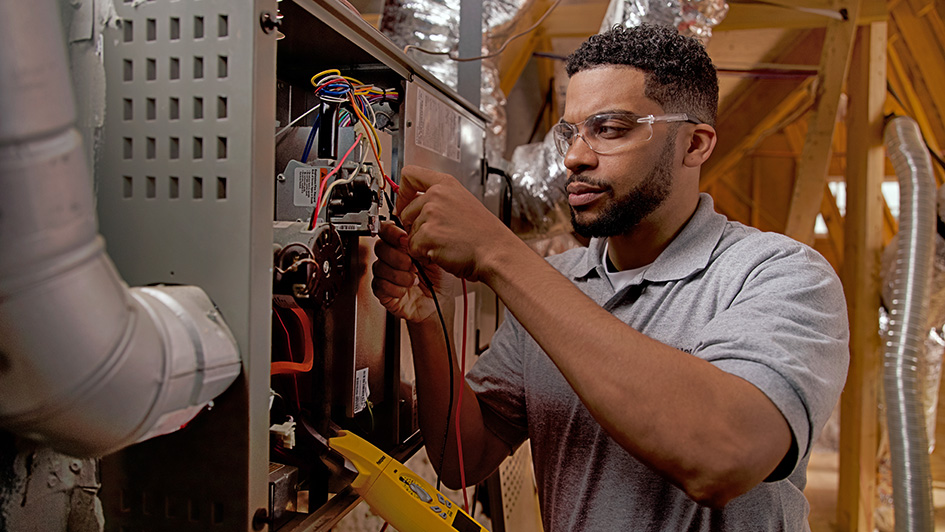
A furnace is often a background player for your home, helping keep you warm during the cold winter months. It often doesn’t get noticed until something breaks down.
One cause might be that your furnace has a cracked heat exchanger. It can be a safety risk, so it’s important to know the signs of a cracked heat exchanger and what to do if you suspect that may be the problem.
What Is a Heat Exchanger in a Furnace?
A heat exchanger transfers heat from the combustion chamber inside your furnace to the air that flows throughout the ventilation. It usually handles this with coils or tubes that heat up the air while functioning as a barrier to keep the gasses created in the combustion chamber, called flue gasses, from getting out into your home.
Is a Cracked Heat Exchanger Dangerous?
Thanks to its key role, it shouldn't come as a surprise that a broken heat exchanger can pose a risk. Cracks in the heat exchanger can enable dangerous gasses – like carbon monoxide, which can be lethal – to circulate through your home.
For this reason, don't ever use your heater if you believe there's a crack in the heat exchanger, as letting it run could make the entire family sick. Contact an HVAC professional right away if you believe your furnace has a cracked heat exchanger that should be repaired.
Four Symptoms of a Cracked Heat Exchanger:
- Furnace shuts off: A cracked heat exchanger may cause your furnace to shut off.
- Strange Smells: If the air coming out of your furnace has an intense chemical odor, it might be a sign gas is slipping through cracks in your heat exchanger. These byproducts, which can smell like formaldehyde, are a common warning sign.
- Carbon monoxide alarm is triggered or you feel health problems: If a cracked heat exchanger is emitting carbon monoxide into your home, your carbon monoxide alarm should go off or family members may experience signs of carbon monoxide poisoning. Side effects include headaches, dizziness, weakness, nausea, vomiting or feeling sleepy. If your alarm goes off or you feel sick, leave the home as soon as you can and then call for help.
- Soot: If you notice black sooty collecting near the exterior of your furnace, it’s an indication something may be seriously wrong.
What You Can Do if Your Furnace Heat Exchanger is Cracked
If you worry your furnace has a cracked heat exchanger, contact a pro experienced in furnace installation Des Moines right away so they can inspect your system and, if necessary, perform a furnace heat exchanger replacement. Costs should vary depending on the situation, but estimates can roughly suggest $1,000 to $3,000.
Estimates aside, the good news is that heat exchangers are generally protected by the warranty. You should confirm the warranty paperwork on your furnace, as while the warranty might not cover the entire cost of repairs, it can significantly shrink your bill.
How to Prevent a Cracked Heat Exchanger in Your Home
One of the most convenient ways to avoid problems in your furnace overall is with routine furnace maintenance. Furnaces offer the most benefits when they operate efficiently. Contacting a certified professional to check your furnace for broken-down parts, dirty filters and other common problems can help you avoid getting a big bill later on.
It’s also beneficial to take a look at your furnace filters every few months – it’s encouraged some filters be swapped out every 90 days or sooner if they are dirty or grimy. While the filters aren't a part of the heat exchanger itself, the strain of drawing air through a clogged filter makes the entire furnace work longer to accomplish its job. And the harder your furnace has to work, the more wear and tear pieces like the heat exchanger will sustain.

